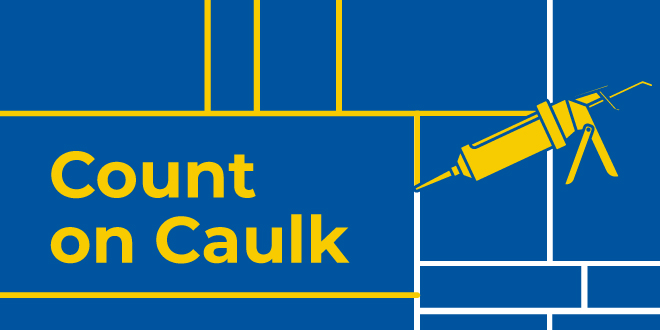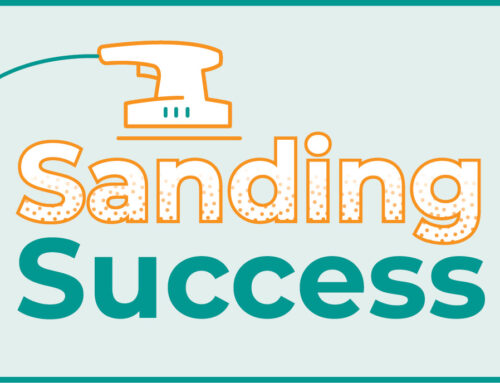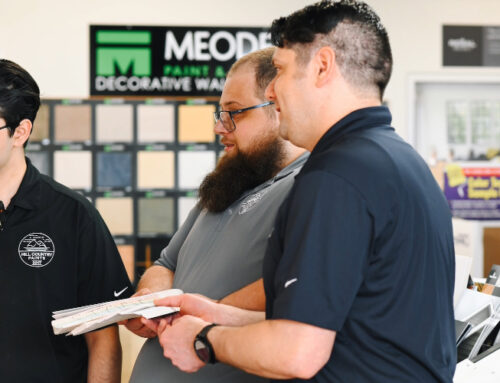The caulk and caulk tools category can be a source of high-volume sales, regardless of how much shelf space you dedicate to it in your operation. Paint & Decorating Retailer talked to co-owner Carey Lockhart at East Bay Paint Center, who shares how the store earns high-volume business in caulk and caulk tools from just one endcap.
Boosting Sales: Teach your employees the importance of add-on sales to increase transaction size and revenues at YourNHPA.org/selling-skills.
Maximizing Space
In 1989, East Bay Paint Center opened in Albany, California, across the bay from San Francisco. Since then, the store has doubled in size and quadrupled its annual sales. One thing that hasn’t changed in size, however, is its caulk and sealant category. Still positioned on a 4-foot endcap, this top selling category sees constant inventory rotation in a small space. Lockhart grew up in the store over the past 34 years as her father, Bob Langbein, owned the store and worked alongside her mother, Maria Langbein. Lockhart has seen the store expand over the last three decades and through this, she has seen success with a small but well-curated caulk and caulk tools section.

The team at East Bay Paint Center works together to bring in a variety of caulk products for customers.
Taking a Chance
Even with such a small section, keeping items in stock is still a challenge. That’s why Lockhart and her team have varied the caulk product and tools section throughout the years, offering a range in price and quality to see what sells best and what customers’ responses are. This strategy separates East Bay Paint Center from the competing paint store across the street and the big-box retailers in the area.
“Because we have a wide range of products, our customers know we will have what they need in stock,” Lockhart says. “If we don’t have it, we can get it in one to two days. We receive shipments five days a week, allowing us to get items in quickly when customers need them.”
Beyond receiving frequent shipments, being in the independent market has allowed East Bay Paint Center to try new things.

1. Matching paint color for a seamless transition between wall and trim.
2. Match to tile grout for a waterproof seal on edges of backsplashes and showers.
3. Create a clean, color-matched seam between cabinets and walls.
4. Seal the edges of tile floors with caulk that matches the grout.
5. Fill in cracks with exact color-matching caulk that works on most surfaces.
More Than Caulk: Read how one store took its caulk category to the next level and connected with the community at PDRmag.com/buhrmesters.
Preparing DIY Projects
If a DIYer comes in with a caulking project, ask them questions to lead them to the right product. Questions can include where the caulk will be applied, what types of surfaces are going to be caulked and how much movement will be placed on the joint that is being caulked.
When they’ve selected the product that will work best for their project, guide them through the caulking process for best results.
1. Clean the project area thoroughly. Scrape away old caulk with a putty scraper or knife.
2. Use tape to outline the area to make clean-up faster.
3. Apply caulk to the cleaned area. Make sure to angle the caulk tube at a 45 degree angle and pull the tube, not push, for the best results.
4. Wipe away excess caulk to create a smooth edge by using a caulk finisher tool or a soapy finger for easy results.
5. Remove the tape by lifting it upwards at a 45 degree angle away from the seal to keep it smooth and intact.
Source: The Best Caulking Tips to Get Professional Results, The Spruce
“We take chances on products. For example, if it’s a newer product that may be slightly more expensive, we can purchase a small amount to see how well it sells in the store. If it sells well, we know it’s something we should keep on the shelves.”
— Carey Lockhart, East Bay Paint Center
“We take chances on products,” Lockhart says. “For example, if it’s a newer product that may be slightly more expensive, we can purchase a small amount to see how well it sells in the store. If it sells well, we know it’s something we should keep on the shelves.”
For example, one product they took a chance on through this method is now one of their top selling SKUs, with more than 17,000 units sold in 2022 alone.
“If someone wants to try something new, we can order it tomorrow and have it in the store three days later,” Lockhart says.

A unique feature of East Bay Paint Center is how ordering is completed. Employees are encouraged to take control of a section or category and manage the inventory for that area.
“We encourage employees to own a section of the store,” Lockhart says. “They can bring in new products or try new layouts.”

Co-owners Pablo Meza and Carey Lockhart proudly display their caulk and caulk tools section in the center of the store.
This strategy has been successful in the caulk and caulk tools category, where ordering and stocking is done by an individual employee. Though it’s only a 4-foot endcap, the section is constantly updated with rotating inventory in a range of prices and purposes.
“Constantly rotating caulk and caulk tools allows our employees to become more involved in the business which, in turn, keeps them motivated and engaged with their jobs, the store and the community we serve,” says Lockhart.







